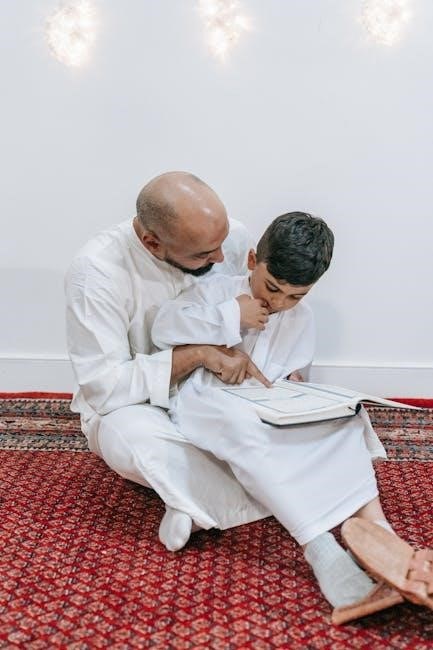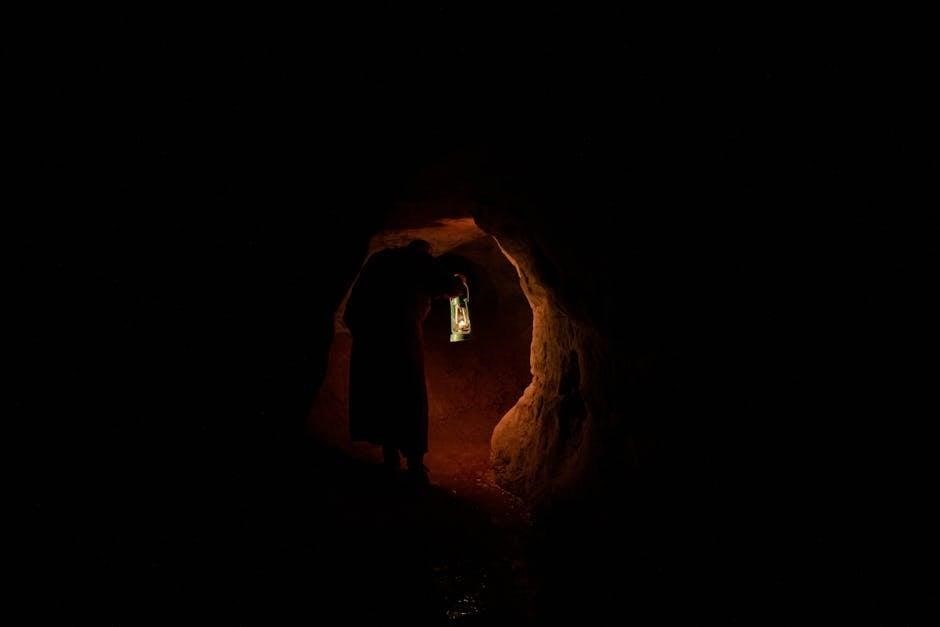This classic teen rom-com, inspired by Shakespeare’s The Taming of the Shrew, stars Julia Stiles and Heath Ledger, blending humor with real high school struggles, making it a must-watch for teens and a useful guide for parents.
1.1 Overview of the Movie
10 Things I Hate About You is a modern adaptation of Shakespeare’s The Taming of the Shrew, set in a high school. It follows the story of two sisters, Kat and Bianca, and their romantic entanglements. The film stars Julia Stiles as Kat, a fiercely independent teenager, and Heath Ledger as Patrick, the charming but rebellious boy who wins her heart. The movie explores themes of love, identity, and societal expectations, blending witty dialogue with relatable teenage struggles. Rated PG-13 for mild sex-related humor and teen alcohol use, it remains a timeless classic for young audiences while offering parents a chance to discuss real-life issues with their teens.
1.2 Relevance to Teenagers and Parents
10 Things I Hate About You resonates deeply with teenagers, tackling themes like individuality, peer pressure, and first love. Its relatable characters and high school setting make it a mirror of teen life, while its humor and heartwarming moments appeal to parents. The film’s exploration of family dynamics, sibling rivalry, and self-discovery provides a rich basis for parent-teen discussions. Rated PG-13, it addresses mature themes such as teen drinking and mild sexual humor, making it a valuable tool for parents to guide their children through adolescence. Its timeless charm ensures it remains a shared experience across generations, fostering both entertainment and meaningful dialogue.

Understanding the Plot and Characters
10 Things I Hate About You modernizes Shakespeare’s The Taming of the Shrew, focusing on sisters Kat and Bianca, whose dating lives spark a charming, chaotic high school romance.
2.1 The Modern Retelling of Shakespeare’s “The Taming of the Shrew”
10 Things I Hate About You reimagines Shakespeare’s The Taming of the Shrew in a 1990s high school setting, focusing on the complex relationship between sisters Kat and Bianca. The story centers around Kat, a strong-willed and independent senior, and her younger sister Bianca, who is popular but naive. The plot explores themes of love, rebellion, and societal expectations, with a modern twist. The film retains the original play’s core themes but adapts them to resonate with teenage audiences, blending humor, drama, and relatable high school dynamics. This adaptation makes the classic tale accessible and engaging for younger viewers while maintaining its timeless message about identity and societal pressures.
2.2 Key Characters and Their Roles
The film focuses on Kat Stratford (Julia Stiles), a strong-willed and independent high school senior, and her younger sister Bianca (Larisa Oleynik), a popular and naive sophomore; Kat’s rebellious nature contrasts with Bianca’s desire to fit in, creating tension between them. Patrick Verona (Heath Ledger), a charming and misunderstood outsider, becomes Kat’s love interest, while Cameron James (Joseph Gordon-Levitt), a new student, falls for Bianca. The story also features Walter Stratford (Larry Miller), the overprotective father, and Ms. Perky (Allison Janney), a guidance counselor. Each character plays a significant role in exploring themes of identity, love, and societal expectations, making the story relatable and engaging for teen audiences.

Themes and Messages in the Movie
The film explores themes of individuality, societal expectations, and authentic love, emphasizing the importance of staying true to oneself while navigating relationships and misunderstandings.
3.1 Individuality vs. Societal Expectations
The movie highlights the struggle between personal identity and societal norms, particularly through Kat’s character, who defies expectations by embracing her uniqueness and rejecting superficiality. Her journey encourages teens to question conformity and value their individuality. This theme is crucial for parents to discuss, as it addresses common teenage pressures and the importance of self-expression. The film’s portrayal of characters navigating these challenges provides a relatable lens for young viewers to reflect on their own values and aspirations. It also reminds parents to support their children in staying true to themselves amidst external influences.
3.2 Love, Relationships, and Teenage Drama
The film delves into the complexities of love and relationships, showcasing the challenges of teenage romance. Kat and Patrick’s relationship evolves from a deal to genuine affection, while Bianca navigates the pressures of popularity and dating. The movie explores themes of first love, heartbreak, and misunderstandings, offering a realistic portrayal of adolescent emotions. Parents can use this to discuss healthy relationships, trust, and communication. The humor and drama balance makes it relatable for teens, while the underlying lessons about loyalty and self-respect provide valuable talking points for families. The PG-13 rating reflects mild mature themes, but the overall message promotes emotional growth and authenticity in relationships.

Parental Guidance and Content Overview
Rated PG-13 for crude humor, mild sex-related dialogue, and teen alcohol use. The film contains mature themes but no explicit violence or nudity, making it suitable for teens with guidance.
4.1 Rated PG-13: What Parents Need to Know
The movie is rated PG-13 due to crude sex-related humor, alcohol, and drug-related scenes involving teens. While there’s no explicit nudity or violence, mature themes are present. Parents should be aware of the film’s portrayal of high school life, including mild profanity and rebellious behavior. The humor and dialogue may not be suitable for younger or sensitive viewers. However, the film’s lighthearted tone and relatable characters make it a great opportunity for teens to engage with real-life issues. Parents are encouraged to preview the content to ensure it aligns with their child’s maturity level. The film’s themes of love and self-discovery, combined with its witty dialogue, make it a classic teen movie worth discussing together.
4.2 Mature Themes and Humor
While 10 Things I Hate About You is a teen comedy, it tackles mature themes like rebellion, peer pressure, and romantic relationships. The humor, though lighthearted, includes crude sex-related jokes and references to alcohol and drugs, which may require parental discretion. Teens may find the witty dialogue and relatable high school scenarios entertaining, but parents should be aware of the film’s portrayal of risky behaviors. The movie balances humor with heartfelt moments, making it a great tool for discussing real-life issues with teens. Parents are encouraged to watch alongside their children to address any concerns and guide them in understanding the differences between fiction and reality.

The Impact of the Movie on Teen Culture
The film became a cultural phenomenon, resonating with teens for its relatable humor, memorable characters, and authentic portrayal of high school life and struggles, leaving a lasting legacy.
5.1 Popularity and Legacy Among Teen Audiences
Since its release, 10 Things I Hate About You has remained a beloved classic among teens. Its blend of witty dialogue, relatable characters, and a modern twist on Shakespeare’s The Taming of the Shrew struck a chord with young audiences. The film’s iconic scenes, such as Heath Ledger’s serenade, became cultural milestones. Teens appreciated its honest portrayal of high school life, including first loves, sibling rivalry, and self-discovery. The movie’s legacy endures, with new generations discovering its charm and humor. Parents often revisit it with their teens, finding it a timeless bridge between generations. Its impact on teen culture is undeniable, making it a must-watch for both adolescents and adults alike.
5.2 How the Movie Reflects Teenage Struggles

10 Things I Hate About You authentically captures the essence of teenage life, exploring themes like self-discovery, identity, and societal pressures. The film delves into struggles such as peer pressure, family conflicts, and the challenges of first love. Characters like Kat and Bianca navigate the complexities of high school, grappling with expectations placed on them by others. The movie also highlights the tension between conforming to societal norms and staying true to oneself. Its portrayal of teen angst, misunderstandings, and the quest for acceptance resonates deeply with young audiences. By mirroring real-life adolescent experiences, the film provides a relatable and engaging narrative for teens and parents alike, fostering empathy and understanding of the challenges of growing up.

Discussing the Movie with Your Teen
Engage your teen by asking open-ended questions about the film’s themes and characters. Discuss how the story reflects real-life challenges and encourages empathy and self-reflection.
6.1 Tips for Starting a Conversation
Start by asking open-ended questions like, “What was your favorite part of the movie?” or “How do you think the characters handled their challenges?” Relate the story to real-life situations, such as peer pressure or family conflicts, to spark deeper discussions. Encourage your teen to share their thoughts on the characters’ decisions and whether they agree with them. Listen actively and avoid judgment to create a safe space for dialogue. Discuss how the movie portrays themes like individuality and relationships, and ask if they see these issues in their own life. Use humor or relatable scenes from the film to break the ice and make the conversation more engaging. This approach fosters connection and helps teens feel heard and understood.
6.2 Addressing Sensitive Topics and Lessons Learned
Discuss the movie’s portrayal of sensitive topics like misogyny, peer pressure, and substance use. Highlight how characters like Kat navigate societal expectations while staying true to themselves. Talk about the consequences of impulsive decisions, such as Patrick’s rebellious behavior, and how they impact relationships. Emphasize the importance of respect and consent in romantic relationships, as seen in the evolution of Kat and Patrick’s dynamic. Encourage your teen to reflect on how the characters grow and learn from their mistakes. Use these moments to discuss real-life lessons, such as the value of honesty and standing up for oneself. Foster a dialogue where your teen feels comfortable sharing their thoughts on these issues and how they relate to their own experiences.


“10 Things I Hate About You” offers a humorous yet insightful look at teen life, balancing entertainment with lessons on identity, relationships, and societal pressures, making it a valuable tool for fostering open dialogue and critical thinking between parents and teens.
7.1 Final Thoughts for Parents
Parents should recognize the value of 10 Things I Hate About You as both entertainment and a tool for sparking meaningful conversations. The film’s PG-13 rating reflects mild content, including sex-related humor and teen drinking scenes, which should be discussed with sensitivity. While the movie captures the essence of teenage struggles and relationships, it also highlights themes of individuality, love, and societal expectations, offering lessons for teens. Encourage your child to reflect on the characters’ choices and growth, fostering critical thinking and open dialogue. This film serves as a bridge for understanding modern adolescent challenges, making it a worthwhile watch for both teens and parents alike.
7.2 Encouraging Critical Thinking and Open Dialogue
Engage your teen in discussions about the film’s themes, such as individuality, societal expectations, and relationships. Ask open-ended questions like, “Why do you think Kat acted that way?” or “Do you agree with Patrick’s choices?” This fosters critical thinking and helps them connect the story to real-life situations. Encourage them to share their opinions on the characters’ decisions and how they might handle similar challenges. Discussing sensitive topics like peer pressure or romance can deepen their understanding and your connection. Use the film as a tool to explore their values and perspectives, promoting empathy and thoughtful conversation.



